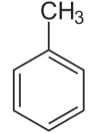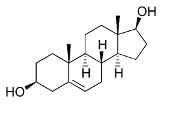MCAT Exam > MCAT Tests > Test: Alcohols and Phenols - MCAT MCQ
Test: Alcohols and Phenols - MCAT MCQ
Test Description
10 Questions MCQ Test - Test: Alcohols and Phenols
Test: Alcohols and Phenols for MCAT 2025 is part of MCAT preparation. The Test: Alcohols and Phenols questions and answers have been prepared
according to the MCAT exam syllabus.The Test: Alcohols and Phenols MCQs are made for MCAT 2025 Exam.
Find important definitions, questions, notes, meanings, examples, exercises, MCQs and online tests for Test: Alcohols and Phenols below.
Solutions of Test: Alcohols and Phenols questions in English are available as part of our course for MCAT & Test: Alcohols and Phenols solutions in
Hindi for MCAT course.
Download more important topics, notes, lectures and mock test series for MCAT Exam by signing up for free. Attempt Test: Alcohols and Phenols | 10 questions in 10 minutes | Mock test for MCAT preparation | Free important questions MCQ to study for MCAT Exam | Download free PDF with solutions
Test: Alcohols and Phenols - Question 1
Which of the following alcohols would have the lowest boiling point?
Detailed Solution for Test: Alcohols and Phenols - Question 1
Test: Alcohols and Phenols - Question 2
Which of the following alcohols would be most soluble in water?
Detailed Solution for Test: Alcohols and Phenols - Question 2
Detailed Solution for Test: Alcohols and Phenols - Question 3
Test: Alcohols and Phenols - Question 4
Which of the following reactions will undergo an SN1 reaction?
Detailed Solution for Test: Alcohols and Phenols - Question 4
Test: Alcohols and Phenols - Question 5
Which of the following reactions will undergo an SN2 reaction?
Detailed Solution for Test: Alcohols and Phenols - Question 5
Test: Alcohols and Phenols - Question 6
Phenol can be a solid at room temperature while benzene is a liquid. What explains this difference?
Detailed Solution for Test: Alcohols and Phenols - Question 6
Test: Alcohols and Phenols - Question 7
Which of the following will convert this alcohol into a ketone?

Detailed Solution for Test: Alcohols and Phenols - Question 7
Test: Alcohols and Phenols - Question 8
Protecting an alcohol with tosyl chloride would likely have which of the following effects?
Detailed Solution for Test: Alcohols and Phenols - Question 8
Test: Alcohols and Phenols - Question 9
Which of the following is a correct statement explaining why toluene is an aromatic molecule?

Detailed Solution for Test: Alcohols and Phenols - Question 9
Test: Alcohols and Phenols - Question 10
The following biological molecule is exposed to NADH. What is the expected product?

Detailed Solution for Test: Alcohols and Phenols - Question 10
Information about Test: Alcohols and Phenols Page
In this test you can find the Exam questions for Test: Alcohols and Phenols solved & explained in the simplest way possible.
Besides giving Questions and answers for Test: Alcohols and Phenols, EduRev gives you an ample number of Online tests for practice
Download as PDF
















